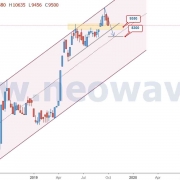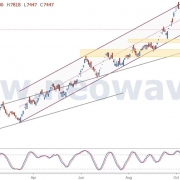(158) New Tips & Hints
How can you determine the beginning and end of a wave?
ANSWER:
This is one of the most basic questions ever asked in this forum. Because of its importance, it is addressed (in great detail) very early in Mastering Elliott Wave (MEW). In Chapter 2 of MEW I describe the proper way to plot charts. If you use bar charts, futures data, candlesticks or moving averages to do your wave analysis, you will be sadly disappointed with your results or your ability to analyze and forecast markets. You’ll repeatedly need to go back in time to adjust past structure to fit future reality.
If you want reliable, consistently accurate wave patterns, that stand the test of time, you must begin with the right type of chart – what I call a WAVE chart. Even with this process, there will be times (near the center of formations) when price action simply can’t be predicted. But, here’s how you create charts that provide the proper foundation for good wave analysis.
1. Use Cash data (this is essential) whenever possible
2. The high and low of each period (hourly, daily, weekly, monthly) must be determined
3. Those highs and lows must be plotted, as dots, equidistant apart, in the order they occurred in real time
4. Each dot must then be connected, with a straight line, to its next closest dot.
The resulting chart is a highly accurate representation of the ebb and flow of price history. EVERY TURN in price (of a properly drawn, cash chart) creates a single “wave,” or what I call a “monowave.” Those monowaves are the building blocks of all Elliott and NEoWave patterns.











دیدگاه خود را ثبت کنید
تمایل دارید در گفتگوها شرکت کنید؟در گفتگو ها شرکت کنید.